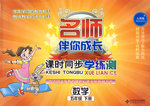题目内容
If Kate had known what was _______ for her, she would not have married Tom.
A. in response B. in return
C. in reaction D. in store
练习册系列答案
 名师伴你成长课时同步学练测系列答案
名师伴你成长课时同步学练测系列答案
相关题目
题目内容
If Kate had known what was _______ for her, she would not have married Tom.
A. in response B. in return
C. in reaction D. in store
 名师伴你成长课时同步学练测系列答案
名师伴你成长课时同步学练测系列答案